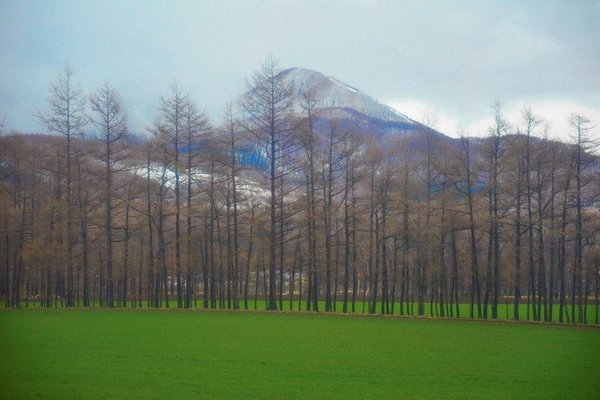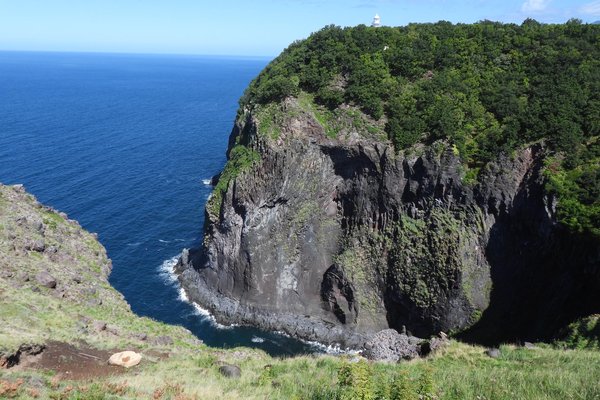Japan
Shiretoko
Shiretoko holds rich, correlated terrestrial and marine ecosystems influenced by seasonal ice in its sea waters.
The peninsula’s forests are home to various wildlife, including brown bears, deer, and foxes. Its biodiversity is very important for salmon, migratory birds and sea mammals, such as sea lions. Life in the sea, rivers, and forests interacts via salmonid species swimming upstream to spawn and becoming food resources for terrestrial animals.
Community Perspective: Utoro is the tourist hub for this park; from here, you can take a cruise along the coast (beware of frequent cancellations) or a bus ride + hike to the Five Lakes. Be aware that the season lasts only until late September (and essentially starts only in July), and that it can get very cold afterward. The season with the most bear activity is May-July.
Site Info
Official Information
- Full Name
- Shiretoko (ID: 1193)
- Country
- Japan
- Status
-
Inscribed 2005
Site history
History of Shiretoko
- 2005: Inscribed
- Inscribed
- Type
- Natural
- Criteria
- ix
- x
Links
- UNESCO
- whc.unesco.org
- Official
-
- env.go.jp — Shiretoko National Park
- Related
-
- reggie.net — Wonderful photos of the Five Lakes
- japan-guide.com — Shiretoko Travel Guide
All Links
UNESCO.org
- whc.unesco.org — whc.unesco.org/
Official Website
- env.go.jp — Shiretoko National Park
Related Resources
- reggie.net — Wonderful photos of the Five Lakes
- japan-guide.com — Shiretoko Travel Guide
News Article
- Aug. 16, 2025 japantimes.co.jp — Hiker at Mount Rausu found dead after bear attack
- Jan. 10, 2025 nippon.com — Shiretoko Struggles to Balance Safety, Environment
- June 22, 2024 asahi.com — Construction at Shiretoko World Natural Heritage site suspended
- April 24, 2022 npr.org — Rescue operation for missing tour boat near Shiretoko peninsula intensifies
- Oct. 29, 2019 seafoodsource.com — Japan removing dams for salmon river restoration
- May 11, 2015 ajw.asahi.com — Huge gathering of more than 30 killer whales seen in Shiretoko
- Nov. 21, 2007 yomiuri.co.jp — A special unit of Hokkaido police dressed in black and equipped with night-vision scopes is working hard to catch salmon poachers on the Sharigawa river that runs across the base of the Shiretoko Peninsula.
Community Information
- Community Category
- Natural landscape: Marine and Coastal
Travel Information
Recent Connections
-
Oceanic Dolphins
Pacific White-sided dolphin and Orca (U…
-
Perfect Inscriptions
2005 -
Whales
"The property is a seasonal habitat for…
Connections of Shiretoko
- Geography
-
-
Pacific Ocean
Lies at the Sea of Okhotsk, "a marginal sea of the western Pacific Ocean" (wiki) -
Hot Springs
A hot springs waterfall called Kamuiwakkayu-no-taki -
Pacific Ring of Fire
From Shiretoko Cape at the tip of the peninsula, a series of volcanoes run down the peninsula, including Mount Shiretoko, Mount Unabetsu, and Mount Iō. (wiki) -
Straits
Lies at Nemuro Strait -
Cape
Shiretoko Cape -
Geysers
Rausu Kanketsusen -
Peninsula
Fully occupies the Shiroteko PeninsulaSee en.wikipedia.org
-
- Trivia
-
-
Fatal Accidents or 'disasters'
April 2022: "Ten confirmed dead from missing tourist boat. ...The Kazu 1 is believed to have been on a three-hour sightseeing voyage around the Shiretoko Peninsula."See www.bbc.com
-
- Ecology
-
-
Eagles
Steller's Sea Eagle, White-tailed Eagle (Official description) -
Strict Nature Reserve
Partly: Onnebutsedake Wilderness Area. Restrictions unkown. -
Whales
"The property is a seasonal habitat for a number of marine mammals including .. Killer Whale, Minke Whale, Sperm Whale, ... and the endangered Fin Whale." (OUV) -
Stratovolcanoes
"Mount Rausu (羅臼岳, Rausu-dake) is a stratovolcano on the Shiretoko Peninsula" (wiki) -
Virgin Forests
The terrestrial ecosystem has various types of virgin vegetation (AB ev) -
Bird Migrations
The East Asian-Australasian Flyway -
Seals
Spotted Seal -
Bears
Brown bear -
Oceanic Dolphins
Pacific White-sided dolphin and Orca (UNEP-WCMC)
-
Fish
Crit X: Shiretoko is also globally important for a number of salmonid species, encompassing habitat in many small watersheds and supporting several species of Pacific salmonids, including White spotted charr, masu salmon, chum salmon and pink salmon. Those watersheds have specific importance as it is the southernmost habitat in the world for the sea run of the Dolly varden.
-
- World Heritage Process
-
-
Perfect Inscriptions
2005
-
- Human Activity
-
-
Language isolate
Ainu - The Shiretoko peninsula, stretching out to the north-east of Hokkaido, the northernmost island in the Japanese archipelago, is the ancestral home of the Ainu people. Ainu has two dialects (Hokkaido and Sakhalin), which are sometimes considered separate languages.
-
- WHS on Other Lists
- Timeline
-
-
Late Pleistocene
For example, sea cliffs around Utoro range from 60m to 120m in height and were formed from andesitic lava from the eruption of Mt Rausu 80,000 years ago and subsequent marine erosion. (AB ev)
-
- WHS Names
-
-
Named after a Mountain
Mount Shiretoko (1,253 m)
-
News
- japantimes.co.jp 08/16/2025
- Hiker at Mount Rausu found dead af…
- nippon.com 01/10/2025
- Shiretoko Struggles to Balance Saf…
- asahi.com 06/22/2024
- Construction at Shiretoko World Na…
Recent Visitors
Visitors of Shiretoko
- Atila Ege
- Brett Baumann
- Casey
- Celina Nanbara
- cutecid
- Els Slots
- Eva Kisgyorgy
- Fan Yibo
- Frederik Dawson
- Harry Mitsidis
- Iain Jackson
- ivantham
- Jasam
- Jeffrey Chai
- John Smaranda
- Kasper
- Kurt Lauer
- Lee Kai Loong
- Lithobates
- Luis Filipe Gaspar
- M.HATADA
- Mihai Dascalu
- MMM
- Naim Y
- Nihal Ege
- Patrik
- Randi Thomsen
- Sergio Arjona
- Svein Elias
- Tcchang0825
- Thomas Buechler
- Tsunami
- Velvetlapis
- Westwards
- Xiong Wei
- Xiquinho Silva
- Yongcheng Liu
- Zoë Sheng
Community Reviews
Show full reviews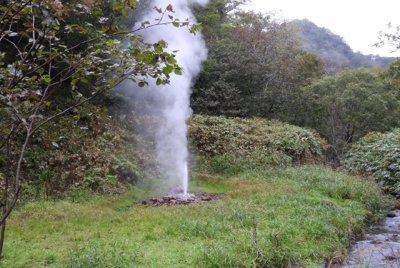
Visit date(s): September 25 & 26, 2024
Nearby sites on trip: Jomon prehistoric sites, although they are not very close. We saw our first one 3 days later.
Overnight location: Utoro
Location(s): Shiretoko National Park: Goko lakes hike, Furepe waterfall hike, Cape Shiretoko sightseeing boat, Shiretoko pass drive, Rausu Kanketsusen Geyser (photo)
Travel method(s): Car, foot, boat
Travel duration: Less than 10 minute drive to the park. Less than 2 hour drive to the furthest point on the other side of the peninsula. We reentered the park at the field house on the north side.
Visit duration: 2 days
OUV: We saw lots of deer, birds and a fox. The bears are given priority over humans in areas where they like to feed, so it appears that the ecosystem is being protected. It is a wild and beautiful place.
Best of: Sightseeing boat trip to the cape. It was good light and although there were waves, the Aurora was very stable. There were a few waterfalls, intriguing rock formations and some abandoned buildings. We were also, separately, thrilled to see a small geyser that I hadn’t read about beforehand!
Worst of: There were not a lot of food options in Utoro in the evening and they closed early. We did have some excellent food, but it was work to find it.
Keep reading 0 comments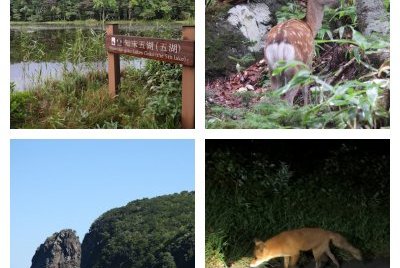
It has been a long, hot summer in Japan this year. It still affected Hokkaido’s Shiretoko NP when I visited in early September – with daily temperatures of about 26 degrees, it wasn’t what I had expected. No mist and clouds, and it looked more like Central Sweden during Midsummer than a place notorious for its seasonal sea ice.
Before going, it is important to understand which of the ‘seasons’ you’re in: this strongly affects which activities you can do and what animals you might see. There’s the ‘Drift Ice Season’ (mid-January to early March), the ‘Bear Active Season’ (May-July) and the ‘Eco Preservation Awareness Season’ (August to mid-November). Outside these tourist months, everything will be closed and roads are impassable due to snow. I flew into Memanbetsu Airport and rented a car from there (it’s a 1.5h drive). You can also get around on public transport but there aren’t many buses a day.
In September, the main trail at the Shiretoko Five Lakes can be walked independently (in ‘Bear Active Season’ you may not). You do need to get a permit though at the Shiretoko Goko Field House (costing a nominal 250 yen) and they make you attend a 13-minute presentation about the do’s and don’ts in the forest, and especially how to behave around bears (Don’t run!). The 3km long hike mostly follows a trail through the forest, which occasionally opens up for each of the five lakes. Several of the Japanese hikers that …
Keep reading 0 comments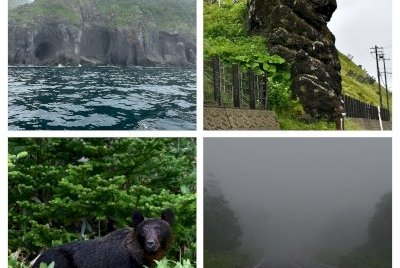
Shiretoko National Park is the northeastern most WHS in Japan. It’s a bit off the beaten track, but a few visitors from this community have managed to tick it off. We managed to visit in late June ‘23.
The nature in the park is wild and unspoilt and animal encounters are common. Somehow, we could connect to this Nordic environment, but then again – it’s far from the nature of northern Europe. On our two-nights visit we had encounters with bears, deer, and foxes. Meeting wild animals in their natural habitat is magnificent.
The weather was rather nice on arrival, and we chose to drive directly into the park to the area called Five Lakes. It was impossible to know how the weather would turn out the following days. Five Lakes has a visitor centre and some options for hiking the area. Even though we arrived late (all visitors were leaving the place) the parking officer granted us a quick visit just so we could hike to the nearest lake. We were happy with that and strolled on to the elevated boardwalk which is about 800 m long through an open area, winding its way to the lake. While enjoying the beautiful nature both close and distant, we had our first bear encounter halfway, just 10 m from the secured boardwalk. Minding its own business, it totally ignored us. As it turned out this evening in fact, we had the best visibility on our visit.
The first …
Keep reading 0 comments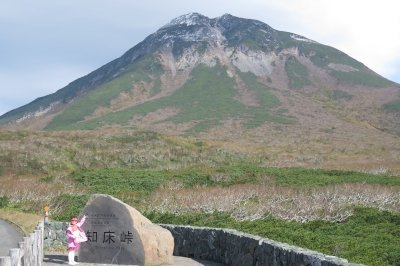
Shiretoko has a lot to offer, at a price. You can technically get here with public transportation but getting around seems a little difficult. I drove in Hokkaido for the entire duration and it was well worth it to explore not only the north of Japan but also the Shiretoko area itself. I stayed at a luxurious hotel (Daiichi, which has a five star buffet if you ask me) which is unusual for me but seemed to match the trip. The hotel (as third party) offers a boat cruise but the weather in October wasn't good enough for the boat to ever depart so I never got to see the northern tip of Shiretoko NP (Mountain) from the boat and there is no other way to get there. The road at the western side enables you to see some wildlife, especially deer, which was great in itself but doesn't really "go" anywhere. There is a famous pass (see pic) as you get over to the east side and there is another road going north which is very similar for both content and views. There are many onsen (hotsprings) around the area but the hotel already offered that so I didn't need to waste exploring time on that.
The easiest and one of the better ones to enjoy is the boardwalk along the Shiretoko Five Lakes. It's easy, very green, very fresh and lots of info to read about. You would usually see migratory birds here but I was already …
Keep reading 0 comments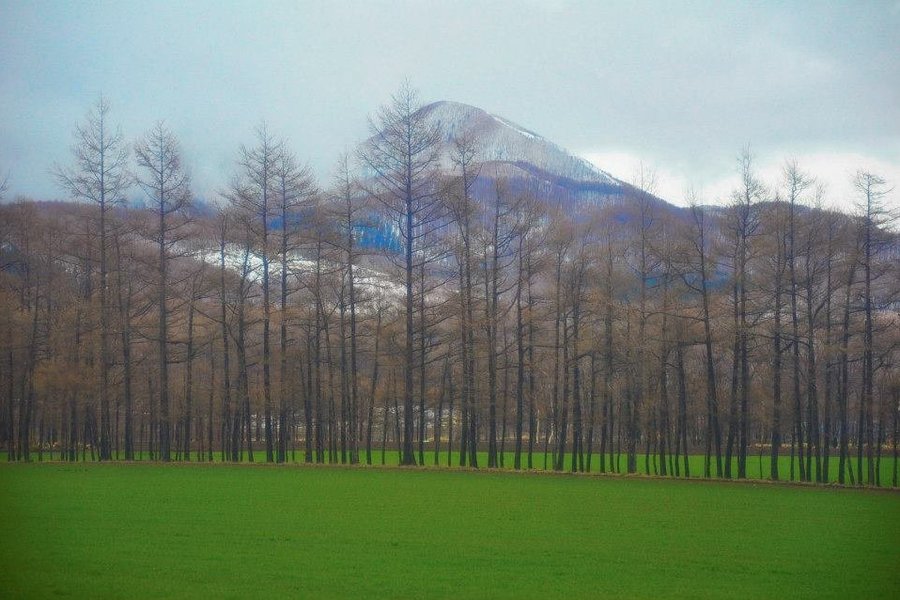
Eastern Hokkaido is an unusual image of Japan; the area is a large unspoiled rural region with the scenery similar to northern Sweden with Japanese signs! I started my trip at Kushiro; the city was famous for its seafood. Then I took a train to Shari, this rail line was quite well known in Japan as it run thru two famous Hokkaido attraction, the Kushiro Marshland and Lake Mashu. The marshland was really surprising when I unexpectedly spotted the Japanese cranes which I heard really hard to see outside reserve area. I reached Shari/Shiretoko station before noon, the lovely designed station really reminded me last year Hiraizumi train station, the connecting bus to Shiretoko National Park was conveniently parking just outside the station. Along the way was beautiful view of mountain, waterfalls and sea coast with protective wire fence separating national park and outside word.
My destination was Utoro, a small tourist town just outside Shiretoko National Park, after hotel check-in, it was a time to explore Shiretoko. I was the only tourist on the bus to Shiretoko Five Lake, when the bus crossed the bridge outside Utoro; the driver welcomed me with broken English to Shiretoko and pointed to the direction of a herd of cute deer on the hill next to the road. They were everywhere on the very steep hill and behind them was the view of the whole town of Utoro and the Okhotsk Sea below! Shiretoko gave me the first "WOW". After deer surprise, the …
Keep reading 0 comments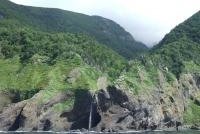
To view the Shiretoko Peninsular I took a cruise on the tourist ship 'Aurora' and sailed along the north coast of the peninsular. I boarded the vessel in the port of Utoro, which I reached by bus from outside Shiretoko Shari station.
The voyage provided a panoramic view of the bush clad peninsular, including its waterfalls, rock formations and steam rising from thermal vents along the ridge.
At Cape Shiretoko where a lonely lighthouse stands looking out towards the Russian Kurile Islands, clearly visible just a few kilometers away, the vessel turned to return to Utoro. This popular 4 hour cruise cost 6500 yen.
Keep reading 0 comments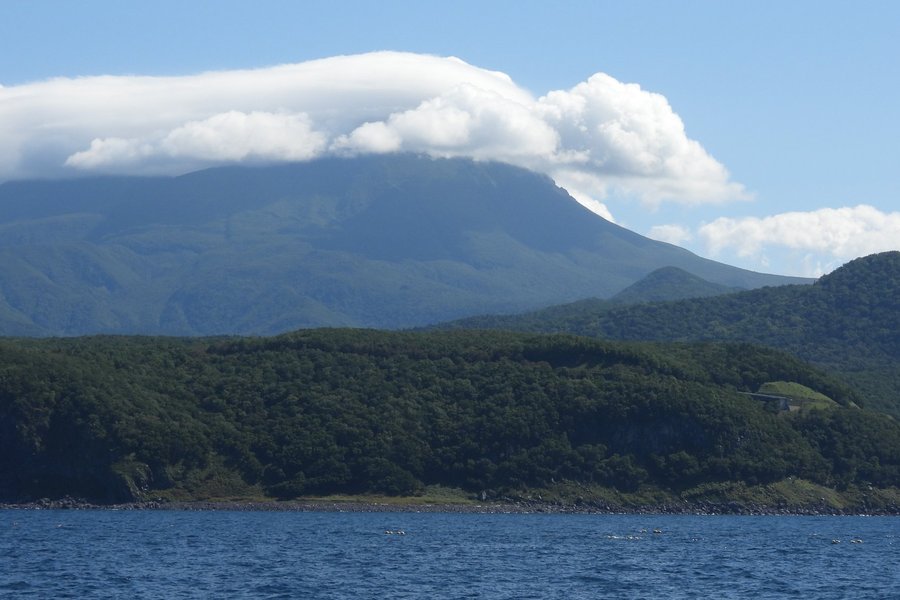
I visited Shiretoko in October 2008. We went to see the fall foliage, which was beautiful. One thing to keep in mind is that Hokkaido is very cold starting in early October and many of the sites in Shiretoko are closed starting in the end of September. We only saw the sites close to the visitor center and along the roads in the park. The weather was rainy and cloudy and a lot of mist covered the mountains. It made the scenery very dramatic and showed the raw nature of the park. Of course so did watching for deer and bears on the road as we drove through rain and snow up at the top of the mountain pass. I plan on going back this summer so that I can enjoy another aspect of this fantastic place.
Keep reading 0 comments
I visited Shiretoko this past summer vacation. It is beautiful. Stayed at a crowded, but cheap campsite in Utoro. Not to be missed are the hotsprings kamuiwakka and Iwaobetsu. Both are incredible. Rausu hotspring is unbearably hot. Also the 5 lakes of Shiretoko are amazing especially on a sunny day when you can see the reflection of the mountain range. Wild deer are everywhere. If you have the energy, the hike up to Mt. Rausu is very nice. Stunning views. Overall a really great place with so much wildlife. I highly recommend Shiretoko.
Keep reading 0 comments
